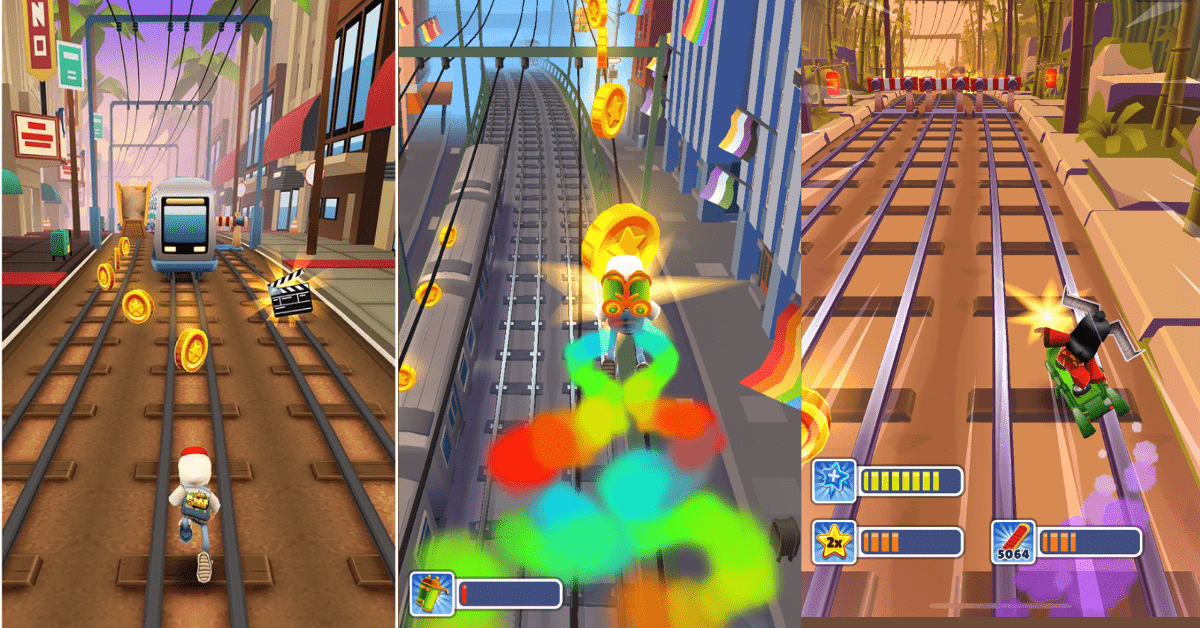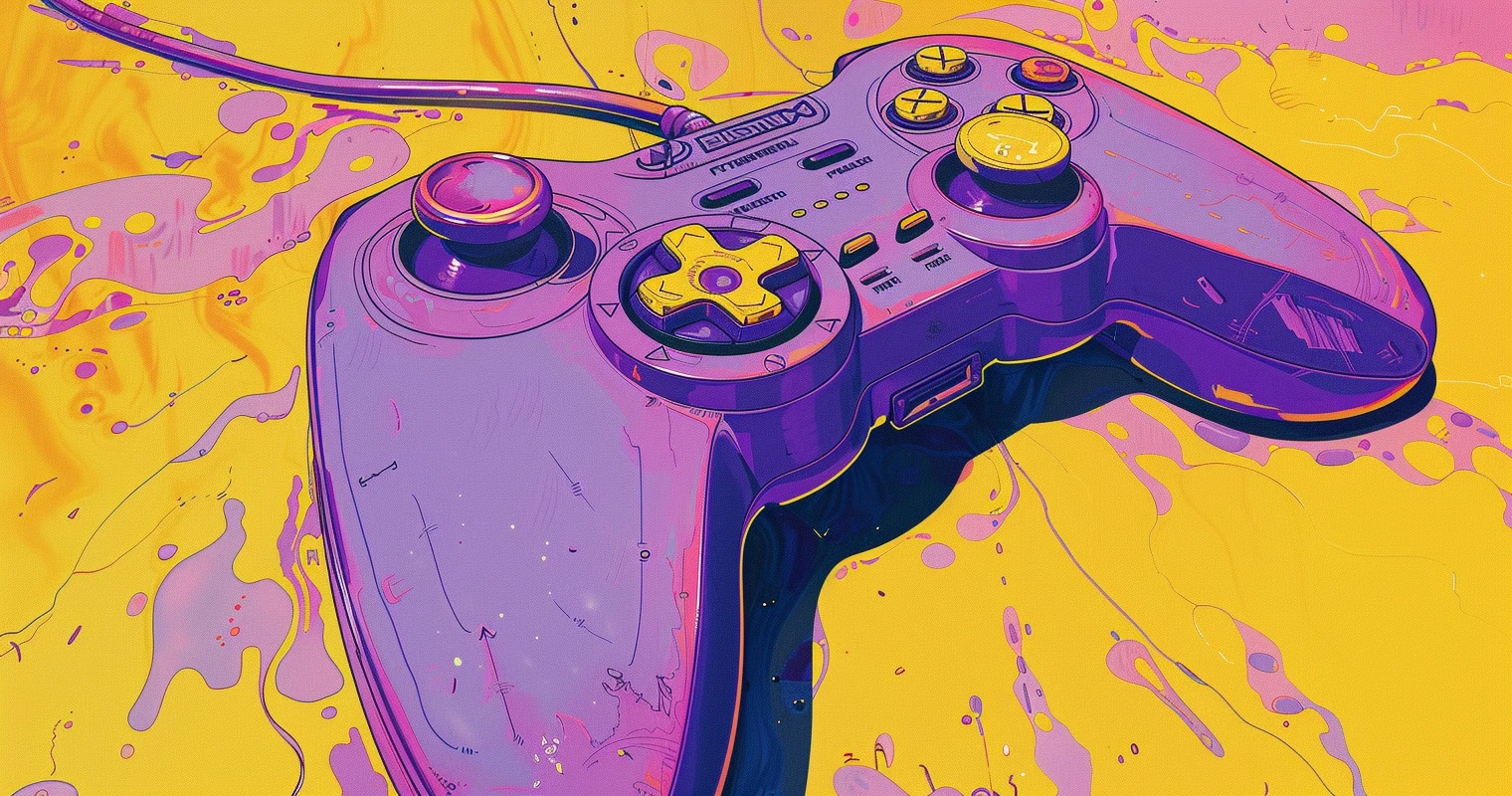Over the past two years, Bungie layoffs have shaken one of gaming’s most iconic studios to its core. Known for genre-defining hits like Halo and Destiny, Bungie found itself making repeated cuts, restructuring teams, and delaying major projects — all while trying to navigate a changing gaming industry and new pressures from parent company Sony.
In this article, we break down what led to these layoffs, who was affected, and what it all means for Bungie’s future. Here’s the full story of a studio trying to survive — and possibly reinvent itself — in a live-service world that no longer guarantees success.
Total Layoffs: A Nearly 50% Workforce Reduction in Under a Year
Between October 2023 and now, Bungie laid off or restructured nearly 50% of its entire workforce — a staggering shift for a studio that was once considered a model for stability and growth in the AAA space.
Let’s break it down:
- October 30, 2023: ~100 employees laid off (~8% of staff)
- July 31, 2024: ~220 employees laid off (~17% of staff)
- Additional Restructuring in 2024: ~155 employees transitioned into roles within Sony or its subsidiaries (~12% of staff)
That’s a total impact on 475 people, out of a workforce that had peaked at around 1,600 in 2023. By the end of 2024, Bungie’s headcount had dropped to approximately 850 employees.
This level of contraction is almost unheard of in AAA game development — especially for a studio with an ongoing live-service product (Destiny 2) and multiple major projects in the pipeline.
Bungie Layoffs in October 30, 2023
In late October 2023, Bungie — the studio behind Destiny 2 — laid off approximately 100 employees, roughly 8% of its workforce. This move shook the gaming community, especially as it came shortly after Bungie had been acquired by Sony for $3.6 billion the year prior.
But this wasn’t a sudden decision.
It was the result of months of internal struggles tied to player dissatisfaction, missed targets, and delayed projects.

The Catalyst: Destiny 2’s Lightfall Expansion
At the center of it all was Lightfall, the highly anticipated Destiny 2 expansion released in early 2023. While initial hype was high, the expansion fell flat with fans and critics alike. The story was labeled confusing, key characters were underdeveloped, and the gameplay loop didn’t innovate in meaningful ways.
This led to a “quality miss,” according to Bungie leadership — and it had serious consequences.
Bungie reportedly missed its 2023 revenue target by a staggering 45%.
Player engagement numbers also fell sharply. Many longtime Destiny players either dropped off entirely or criticized the game’s current direction.
Who Was Let Go?
The layoffs weren’t limited to one department. Bungie cut across various teams, but there were a few especially high-profile and painful losses:
- Community and Social Media Teams: These were the people responsible for talking with players and building community trust — a tough loss for a live service game that thrives on community feedback.
- Quality Assurance (QA) and Support Roles: These often are among the first to go in major cuts, but their departure impacts testing speed and launch readiness.
- Veteran Composer Michael Salvatori: A particularly emotional blow, Salvatori had been composing music for Bungie titles since the Halo era. His departure symbolized a shift away from the studio’s legacy DNA.
Sony’s Role in Bungie Layoffs
While Bungie operates as an independent subsidiary under Sony Interactive Entertainment, the layoffs were closely tied to Sony’s broader cost-cutting efforts across PlayStation Studios. Reports indicated that Sony gave Bungie a mandate to hit revised financial targets — or else face cuts. Bungie leadership chose to act early.
CEO Pete Parsons later acknowledged the decision publicly, stating that the company had made mistakes in execution and had to make hard choices to keep long-term projects on track.
Delayed Titles Add to the Pressure
The situation wasn’t just about Lightfall. Two major upcoming titles also hit delays around the same time:
- Destiny 2: The Final Shape: Originally slated for February 2024, it was pushed back to June 2024. This expansion is supposed to wrap up the game’s long-running “Light and Darkness” saga — making its delay a huge disappointment to players.
- Marathon: Bungie’s first non-Destiny project in years, a sci-fi PvP extraction shooter, was delayed until 2025. Hype had been building, but the shift in timelines meant the studio couldn’t count on new revenue anytime soon.
Cost-Saving Measures Beyond Layoffs
In addition to the 100 layoffs, Bungie implemented sweeping cost-reduction strategies:
- Freezing salaries
- Canceling employee bonuses
- Halting most studio travel
- Cutting back on team off-sites and morale events
It was a tough message for employees who stayed: sacrifices would continue into 2024.
The Fallout: Damage to Reputation and Morale
The public reaction was swift and critical. Fans accused Bungie of mismanagement, especially after the Lightfall misfire. Former employees shared stories online about being blindsided by the layoffs. And current staff described a sharp drop in morale, with trust in leadership at an all-time low.
Bungie has always positioned itself as a studio with a strong internal culture — but this move exposed cracks.
Analysis: What It Means for Bungie
This layoff wasn’t just about financials. It was about correcting course after a series of missteps in both content and expectations. Bungie had overestimated how far Destiny 2 could carry them and underestimated how sensitive their player base was to quality declines.
At the same time, their ambition to grow beyond Destiny — especially through Marathon — meant higher upfront costs, longer dev cycles, and tighter cash flow.
That’s a risky place to be without strong recurring revenue.
Bottom line: Bungie tried to run at full speed while Destiny 2 was stumbling. The October 2023 layoffs were a painful but predictable result of that misalignment.
Bungie Layoffs in July 2024
On July 31, 2024, Bungie announced another major round of layoffs, this time letting go of 220 employees, which amounted to 17% of its total workforce.
But that wasn’t all.
In a simultaneous move, about 155 additional employees (12%) were shifted out of Bungie and into roles within Sony Interactive Entertainment (SIE).
This included staff moved to existing PlayStation Studios and a new sub-studio focused on shared live-service tech.
So in total, nearly 375 Bungie team members — almost 30% of the company — were either laid off or relocated.
Why It Happened: Overgrowth, Overspending, and Missed Goals
Bungie CEO Pete Parsons described this layoff as a response to “overambition.” The studio had grown too fast and taken on too many projects at once, without the revenue to support them.
Several core issues were driving this crisis:
- Multiple big-budget projects in development at the same time, including Destiny 2: The Final Shape, Marathon, and a new unannounced IP.
- Escalating operational costs from rapid expansion between 2022 and 2023.
- Weaker-than-expected live service revenue, especially after Lightfall’s failure to re-engage lapsed players.
- Reliance on future projections that didn’t materialize, including optimistic forecasts for Marathon’s launch and monetization.
In short, Bungie bet on growth — and when Destiny 2 underperformed, everything unraveled.
Who Was Impacted in This Bungie Layoffs Round?
Unlike the October 2023 Bungie layoffs, which mainly hit community and support roles, this round affected almost every department.
That includes:
- Executive-level staff and senior leadership
- LiveOps and monetization teams
- Creative development and systems designers
- Publishing, operations, and HR
Even teams that were central to future projects weren’t immune. Several developers working on Marathon and Bungie’s new sci-fi action IP (rumored to be set in a “science-fantasy universe”) were laid off or moved to different Sony studios.

Sony Tightens the Reins
While Bungie maintains a degree of creative independence, Sony’s influence became more visible during this period.
According to reports from insiders (Forbes, 2024), Sony had set hard revenue goals for all of its first-party studios — including Bungie. After the 2023 performance shortfall, Sony pushed for a realignment of priorities, asking Bungie to:
- Cut costs immediately
- Pause or shelve non-priority projects
- Redirect some talent to shared live-service infrastructure across PlayStation Studios
This led to Bungie transitioning developers to other Sony projects, particularly in multiplayer and live-service titles across the PS5 ecosystem.
The Fallout: A Studio Shrinks, Again
From its peak of 1,600 employees in mid-2023, Bungie’s total workforce shrank to about 850 by the end of 2024 — a 47% reduction in just one year.
Morale remained low following the 2023 layoffs, and the second round only deepened that divide. Employees reportedly felt frustrated by:
- Poor internal communication
- Sudden project cancellations
- Lack of transparency around future roles
Some former employees described it as a “slow-motion collapse” of the company culture that had made Bungie special.
What About the Games?
The projects themselves weren’t immune either:
- Marathon was again delayed, this time into late 2025, with many team members either moved or let go.
- The Final Shape was still on track for June 2024, but with a leaner support structure, concerns grew about post-launch content cadence and quality.
- Bungie also quietly canceled one unannounced new IP, according to a Geekwire report, choosing instead to prioritize fewer, more focused efforts.
There was one upside: a new sub-studio was formed within PlayStation Studios, composed of Bungie veterans and Sony hires, to develop core technology for multiplayer services. That team would work on matchmaking, anti-cheat, and server tools for upcoming PS5 online titles — but not directly under the Bungie brand.
Analysis of Bungie Layoffs
This round of layoffs signaled a major shift in how Bungie operates — and perhaps the end of its era as a truly independent creative powerhouse.
Three key takeaways:
- Bungie is now firmly part of the Sony machine. The days of operating like a private company are over. Sony expects results, and Bungie is being integrated into a broader network of live-service initiatives.
- Destiny’s future is uncertain. Even though The Final Shape is positioned as a climactic moment for the franchise, it may also be Bungie’s final attempt to revive it. If the expansion underperforms, further cuts or a full pivot away from Destiny could follow.
- Marathon must deliver. All eyes are now on Bungie’s first new IP in over a decade. But with delays, layoffs, and resource shifts, expectations may need to be tempered.
Broader Implications: What Bungie Layoffs Say About the Industry
Bungie layoffs aren’t happening in a vacuum. They reflect much deeper shifts and trends that are now shaping the entire gaming industry — from how studios plan long-term projects, to how platform holders like Sony are managing risk.
Here’s what this means for the industry as a whole:
1. Live-Service Fatigue Is Real
Bungie’s struggles are a clear sign that even successful live-service games can hit a wall. After nearly a decade of Destiny 2, player engagement dropped sharply in 2023–2024, and revenue followed.
This raises serious questions about how sustainable long-term live-service models really are, especially when they rely on frequent content drops and seasonal monetization. Studios betting on “forever games” need contingency plans if the core loop starts to stagnate.
2. Studios Are Scaling Back After Years of Overexpansion
From 2020–2022, game studios grew aggressively to meet pandemic-driven demand. Bungie was no exception. But now, with user growth slowing and development costs rising, many are realizing they grew too fast, too soon.
The result?
Mass layoffs, delayed games, and a renewed focus on operational efficiency. Bungie isn’t alone — major studios at EA, Riot, Epic, and even Sony itself have made similar cuts over the past 18 months.
3. Publisher Pressure Is Rising
Sony’s role in both Bungie layoffs sends a strong message: financial performance now comes before creative freedom. Even a highly respected studio like Bungie isn’t immune from publisher demands.
This trend is growing across the board.
Platform owners are consolidating control, setting stricter targets, and reducing tolerance for underperformance — especially in an era where dozens of studios are chasing the same revenue streams in multiplayer and live ops.
4. Developer Morale and Retention Are Taking a Hit
Repeated layoffs and studio shakeups are making it harder to attract and retain top talent. When even big-name studios like Bungie are slashing teams, it adds to the sense of instability already growing in the game dev world.
Some developers are burning out.
Others are leaving AAA altogether for indie or non-gaming tech jobs. And the result is a brain drain that could slow innovation across the board — especially in live-service, where experience matters most.
The Future of Bungie: Rebuilding, Repositioning, or Reinventing?
Following nearly two years of layoffs, internal restructuring, and shifting strategies, Bungie now finds itself in a critical phase of reinvention.
Once the symbol of innovation in console shooters and live-service models, the studio is trying to regain its footing in a gaming market that’s far more cautious — and far less forgiving — than it was a few years ago.
Here’s what Bungie’s future looks like now.
1. Destiny Isn’t Over — But It’s Evolving
On June 4, 2024, Destiny 2: The Final Shape finally launched, delivering the dramatic conclusion to the game’s long-running “Light and Darkness” saga. It marked the end of an era — not just narratively, but structurally.
Following the expansion, Bungie shifted to a new episodic content model, releasing:
- Echoes in June 2024
- Revenant in October 2024
- Heresy in February 2025
This format broke away from the franchise’s traditional seasonal model, offering contained story arcs with more varied gameplay and a faster development cadence.
Looking ahead, Bungie has announced the “Frontiers” roadmap, which includes two medium-sized expansions:
- Apollo – Summer 2025
- Behemoth – Winter 2025
Both are expected to bring new stories, locations, raids, and dungeons, hinting that Destiny 2 will continue — but in a reimagined, more modular form.
Bottom line: Destiny isn’t being phased out. Instead, Bungie is rebuilding the foundation to support its longevity in a more flexible, less resource-heavy way.

2. Marathon Still Holds Promise — But Time Is Ticking
Marathon, Bungie’s upcoming PvP extraction shooter, remains one of the most anticipated live-service titles on Sony’s roadmap — but its path to launch has been rocky.
Originally announced with bold ambition, Marathon was delayed to 2025, and many of its developers were impacted by the 2024 layoffs. While Bungie claims the game is still in active development, the delays and staffing changes have raised questions about scope, polish, and readiness.
If Marathon succeeds, it could give Bungie a new flagship IP for the next generation. If it flops, Bungie may find itself overextended once again — this time without the goodwill that Destiny still commands.
3. Bungie Is Now Deeply Integrated Into Sony’s Strategy
Despite its initial promise of creative independence, Bungie today is operating more like a PlayStation studio than ever before.
In 2024, nearly 155 Bungie employees were reassigned to Sony Interactive Entertainment, including some who joined a new internal team building shared live-service infrastructure for other PlayStation titles. This move reinforced Bungie’s evolving role as a tech and systems powerhouse within Sony’s multiplayer strategy.
Sony sees value in Bungie’s backend services, anti-cheat tech, and matchmaking systems — and that value now extends beyond Bungie’s own games. In other words, even if Destiny or Marathon underperform, Bungie may stay relevant by supporting Sony’s broader ambitions.
4. A Leaner, More Focused Bungie Has Emerged
After cutting its workforce nearly in half, Bungie is now running lean. That forced reset could actually benefit the studio.
By downsizing, scrapping non-priority projects, and rethinking its content pipeline, Bungie is shifting from a growth-at-all-costs mindset to one that’s more sustainable, pragmatic, and player-focused.
Whether this leads to a long-term revival or a slow fade will depend on how well Destiny’s new model performs and how confidently Marathon is executed.
Final Thoughts: Bungie Is Still in the Fight — But It’s a New Game Now
Bungie is no longer the studio it was a few years ago. It’s not just fighting for market share — it’s fighting to redefine its identity.
The good news? Destiny 2 is showing signs of life, and Marathon still has strong potential if Sony gives it time. Plus, Bungie’s technical contributions now matter far beyond its own IPs.
But this next chapter requires humility, discipline, and rebuilding trust — both with players and within its own walls.
Bungie isn’t dead — but the Bungie we once knew is gone. What comes next could be smaller, smarter, and more adaptable — or it could be a final chapter. 2025 will tell us which one it is.
Explore More Game Industry Layoffs
Data Sources
- Bungiepedia, 2023. Bungie Layoffs of 2023
- PC Gamer, 2024. Bungie lays off 220 developers in shocking bloodbath as it aggressively refocuses on Destiny and Marathon
- Polygon, 2024. Bungie cites ‘quality miss’ with Destiny 2: Lightfall amid major layoffs
- The Hardcore Gamer, 2024. Bungie to Lay Off Over 200 Employees, Integrate Further into PlayStation
- The Game Post, 2024. Bungie Workforce Seemingly Reduced By Over 700 Employees In Under 12 Months
- Loadout Magazine, 2024. Bungie Announces Significant Layoffs: 17% of Workforce Cut Amidst Restructuring
- Forbes, 2024. Mass Bungie Layoffs Draw Fury From ‘Destiny 2’ Fans, Past And Present Employees
- Game Pressure, 2024. Bungie Lays Off 220 Employees
- The Verge, 2024. Bungie is laying off 220 employees and moving others to PlayStation







Comments